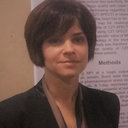Use of atropine in patients with submaximal heart rate during exercise myocardial perfusion SPECT.
Palabras clave
Abstracto
BACKGROUND
Failure to reach 85% of maximal predicted heart rate (MPHR) during exercise may render a myocardial perfusion single photon emission computed tomography (MPS) study nondiagnostic for ischemia detection. Although commonly used to increase heart rate (HR) during dobutamine stress, the administration of atropine for patients failing to achieve 85% of MPHR during exercise performed for MPS is still infrequent.
RESULTS
Patients undergoing dual-isotope MPS were considered candidates for the study when, during exercise treadmill testing, they had less than 85% of MPHR and were unable to continue because of fatigue, without an ischemic response. Forty-seven patients (aged 65.3 +/- 12.5 years, 78.7% men) received atropine (0.6-1.2 mg). Maximal HR achieved before and after atropine was 118.0 +/- 14.8 beats/min (76.3% +/- 6.2% of MPHR) and 146.4 +/- 12.6 beats/min (94.4% +/- 8.1% of MPHR), respectively (P < .001). Of patients, 44 (93.6%) reached at least 85% of MPHR after atropine and had diagnostic MPS studies. After atropine, arrhythmias occurred in 14 patients (29.8%) and other minor side effects in 1 (2.1%).
CONCLUSIONS
Atropine allows patients initially failing to achieve 85% of MPHR during exercise to increase HR and have a diagnostic MPS study, without major complications. It may provide an alternative to pharmacologic stress for patients with a blunted HR response to exercise.


